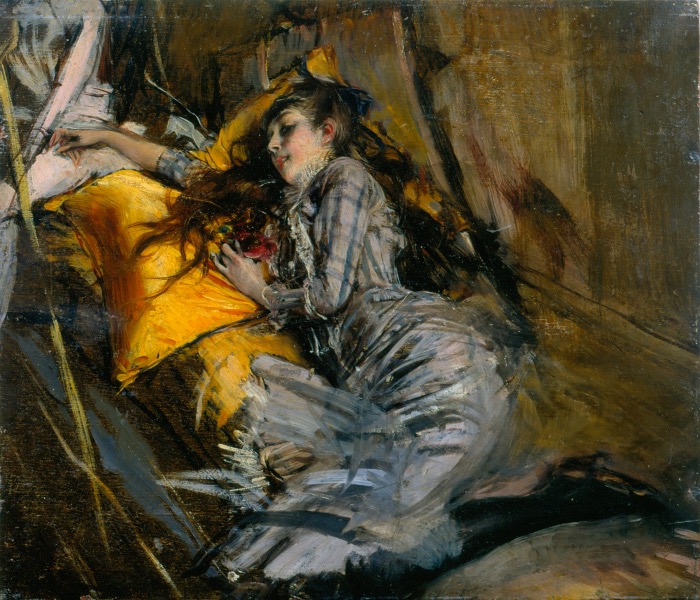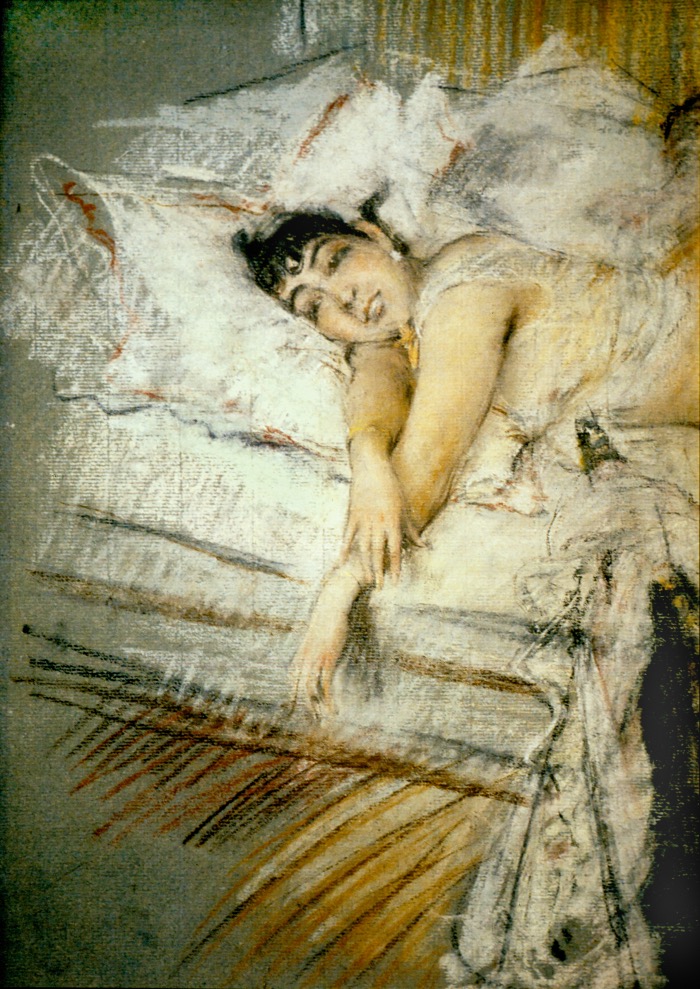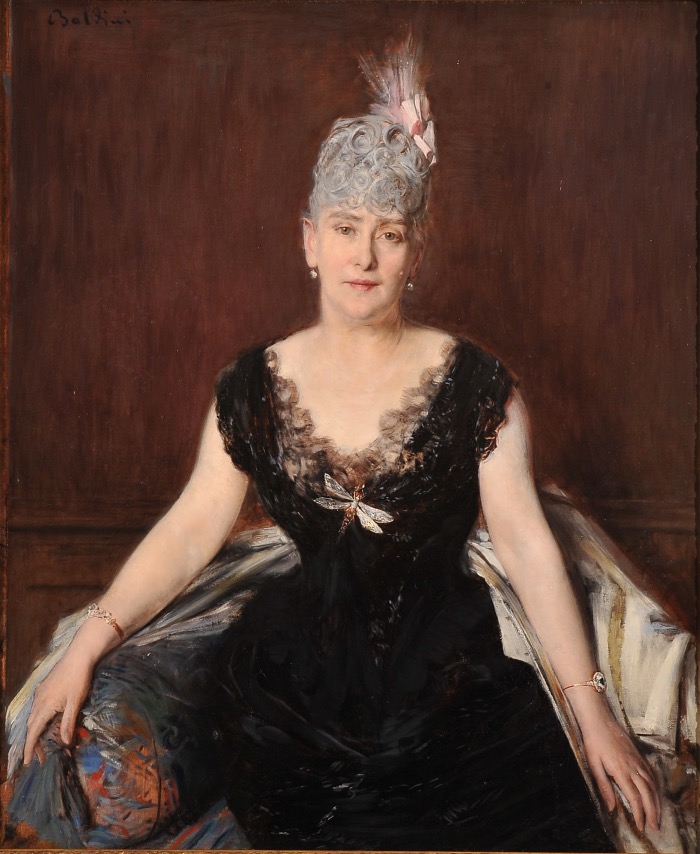
Giovanni Boldini, Ragazza sdraiata con abito scozzese, 1891 c.a. Olio su tavola, 23,3×26,7 cm Collezione privata. Courtesy Gallerie Enrico
BOLDINI AND THE MYTH OF THE BELLE ÉPOQUE
Giovanni Boldini and the Belle Époque, salons, noblewomen and fashion are the elements of a piece of art history and, at the same time, of costume and fashion.
Looking at Boldini’s works, in fact, one is catapulted into a world of literature and fashion, music and luxury, art and bistro.
This is who Boldini really was: a boy from the Po Valley province who came from the bottom and ended up in the salons of high society, in the beating heart of civilisation and of an era that would consecrate him as one of its most iconic protagonists.
Boldini and the myth of the Belle Époque

Giovanni Boldini, La contessa de Rasty a letto, 1880 c.a. Collezione privata. Courtesy Museoarchives Giovanni Boldini Macchiaioli
Boldini the sorcerer, Boldini the faun, Boldini the painter!
This and much more was that insolent little man with the Italian accent who, strolling around Paris, from under his bowler hat, looked down on everyone, returning a greeting with a grimace of detached disappointment.
He, the son of the modest painter-restaurateur Antonio, knew what discomfort was, having experienced at first hand the humiliation of misery, of that shrunken little body encompassed within a single metre fifty-four in height. He who, as a young man, had not been considered a good match for his one great love, Giulia Passega, who had married a young man from a good family, employed at the prefecture.
Giovanni Boldini was a provincial boy who nevertheless knew how to capture the essence of the time in which he lived.
His works are photographs of the Belle Époque and women were willing to do anything to get a portrait of him. They would pose for hours, sometimes for days, sitting in front of the artist’s easel, talking about everything and Boldini never tired of asking the most unseemly questions, coming to understand them deeply and grasping their spirit, peering into their souls.
To be portrayed by Giovanni Boldini meant taking off the clothes of aristocratic haughtiness with which every grand dame of the time was endowed. It was necessary to play along and accept his provocations, responding in kind to the premeditated insolence, but finally conceding oneself, even if only mentally, by knocking down the wall beyond which deep fragilities were concealed.
After days of motionless poses, conversations and confessions, during which Boldini could even allow himself the luxury of wasting time by listlessly tracing a few lines on the pages of a notebook, when the confidence had become such that the glances softened and sometimes even exploded into liberating tears and more often into neurotic or excited to the point of madness, only then was the artist’s spark ignited. Boldini seized the moment, that unique moment when a more sincere glance revealed the state of mind of the woman in front of him.
Giovanni Boldini portrayed his women a moment before their beauty withered away forever. Sometimes, like a sorcerer, he would gather the memory of what those women had been and give them back a moment of eternal springtime.
By portraying his women, Boldini represented an era: the Belle Époque.

Giovanni Boldini, Ritratto di M.me Seligman, 1883. Olio su tela, 100×80 cm. Collezione privata
Courtesy Museoarchives Giovanni Boldini Macchiaioli

